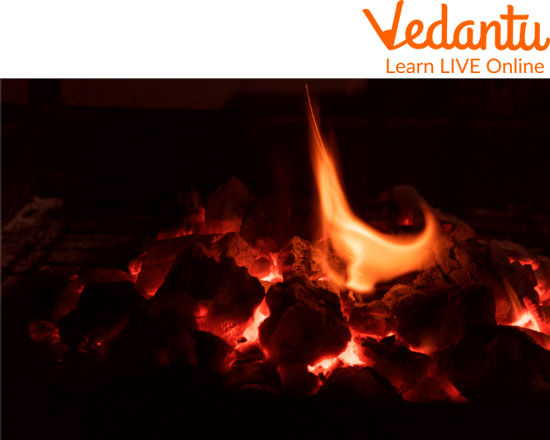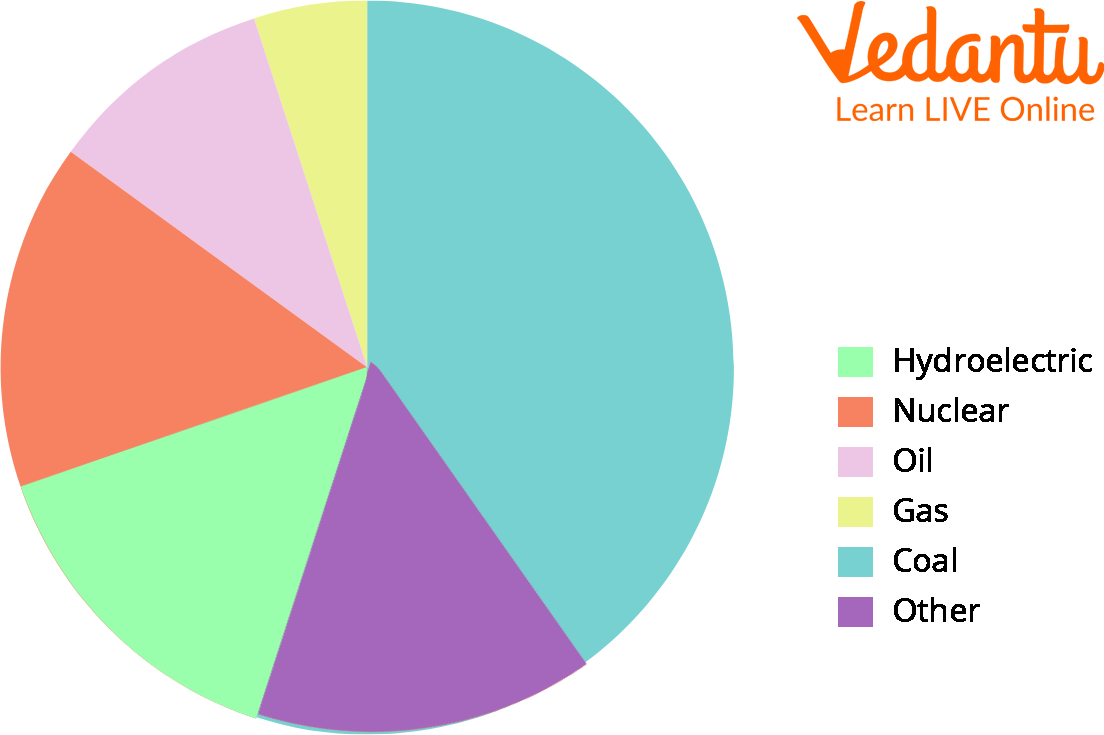




What is Coal?
Coal is one of the most important primary fossil fuels which is a solid carbon-rich material that is usually black and most often occurs in stratified sedimentary deposits. The energy that we get from coal comes from the energy that plants absorbed from the sun millions of years ago.
The use of coal is especially prevalent in developing countries like India because it is affordable with its easy availability and low technological requirements for working with it. Let's check out some interesting coal facts and learn more about its uses and properties. Let’s dive in and learn what is coal.

Burning Coal
Information About Coal
Did you know that coal contributes to approximately 40% of the world’s electricity production? In other words, the world has always relied on this fossil fuel for energy production more than any other energy source, including natural gas, oil, nuclear sources, the sun, water, and the wind.
Now, several coal deposits present will most probably last for another 300 years, but after that, as it is an exhaustible natural resource, there will be none of this fossil fuel left.

A Pie Chart Showing Resources
Uses of Coal
In many European nations such as Germany and Austria, the use of coal has decreased due to the high price of its emissions compared with other fuels such as natural gas or renewable energy sources like solar panels. As a result, these nations have experienced a sharp decline in carbon dioxide emissions over recent years that has shifted their reliance away from fossil fuels like coal towards cleaner forms of energy production.
It is used to generate electricity and heat.
It is used in households & in various industries to accomplish tasks.
It is the cheapest source of power fuel.
The iron and steel industry depends on this fossil fuel for energy.
It is also used to produce products such as coke, tar, and coal gas.
This fossil fuel was responsible for the Industrial Revolution of the 19th century.
Types of Coal
Coal is divided into 4 main types, which are anthracite, bituminous, sub-bituminous, and lignite. Their ranking is done by the amount and the type of carbon that is present inside the coal and its ability to produce heat when it is burned. The rank of the coal deposit determines the amount of heat and pressure that has acted on the dead and decayed matter over a prolonged period.
Coal Facts and Figures
Some interesting facts on coal are as follows:
Coal largely consists of carbon but also contains other elements such as hydrogen, oxygen, sulphur and nitrogen.
Different types of coal contain different amounts of carbon content. Lignite contains around 60 to 75%, while anthracite contains more than 92%.
Anthracite is a hard, shiny, black coal which burns with a blue, smokeless flame. While the majority of coal is associated with sedimentary rock, anthracite undergoes metamorphism and is linked to metamorphic rocks.
Coal has been burned for a very long time to create electricity and heat. Its use is increasing every year, in 2006 the world consumed over 6,000,000,000,000 kilograms of coal!
Coal is the world’s largest energy source in electricity production.
Coal is converted to electricity after it is burned in a furnace with a boiler. The boiler water is further heated until it becomes steam, with the smoke then spinning turbines and generators to create the electricity.
Nearly 70% of China’s electricity comes from coal.
Coal mining and the subsequent burning of coal can have harmful effects on both humans and the environment. Examples of this include waste products, acid rain, contaminated water, poisonous emissions, high levels of carbon dioxide and increased risks of lung cancer for coal plant workers.
Summary
In this article, we learned about what coal is and its types. How coal contributes to the production of 40% of the world's electricity and can be used in household works, etc. were also discussed. We now know how coal has different types which are ranked according to the carbon content they have. Further, various facts about coal were studied, like how it also features hydrogen, nitrogen, sulphur and oxygen except for just carbon and it may also cause pollution when we burn it to get heat and electricity. We hope you enjoyed reading this article; visit our website to read more such interesting topics.
FAQs on Read and Learn Facts About Coal
1. How are coal and petroleum found?
Coal and petroleum were formed from the remains of dead and decayed animals and plants that underwent different biological and geological processes. Coal is the remains of trees and other plants that lived several million years ago.
2. Is coal obtained from petroleum?
Petroleum products are fuels that are manufactured from crude oil and natural gas hydrocarbons. Coal, natural gas, and biomass may all be used to make petroleum products.
3. What are the elements of coal?
Coal consists of carbon with varying quantities of some other elements primarily hydrogen, sulphur, oxygen, and nitrogen.









